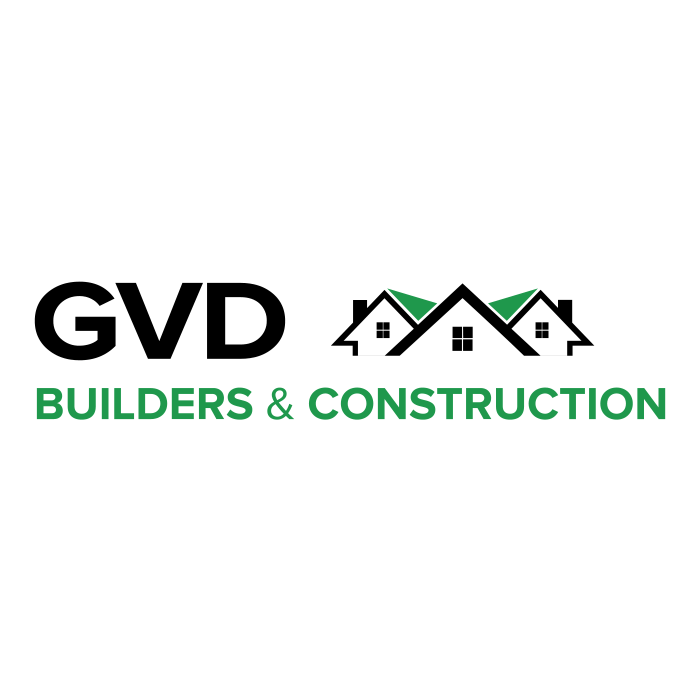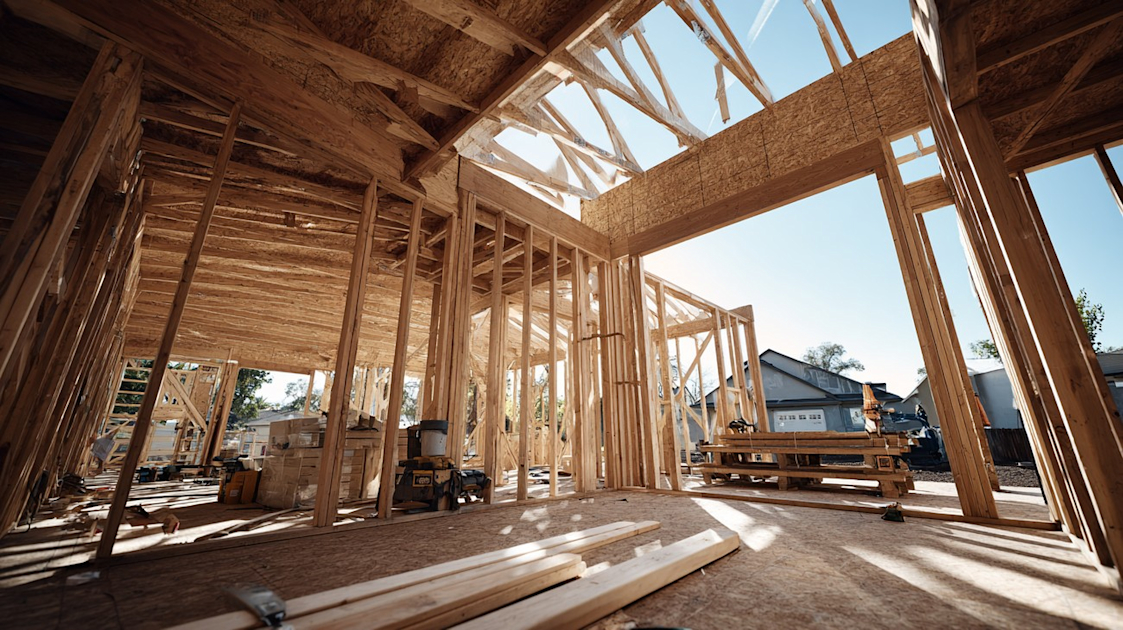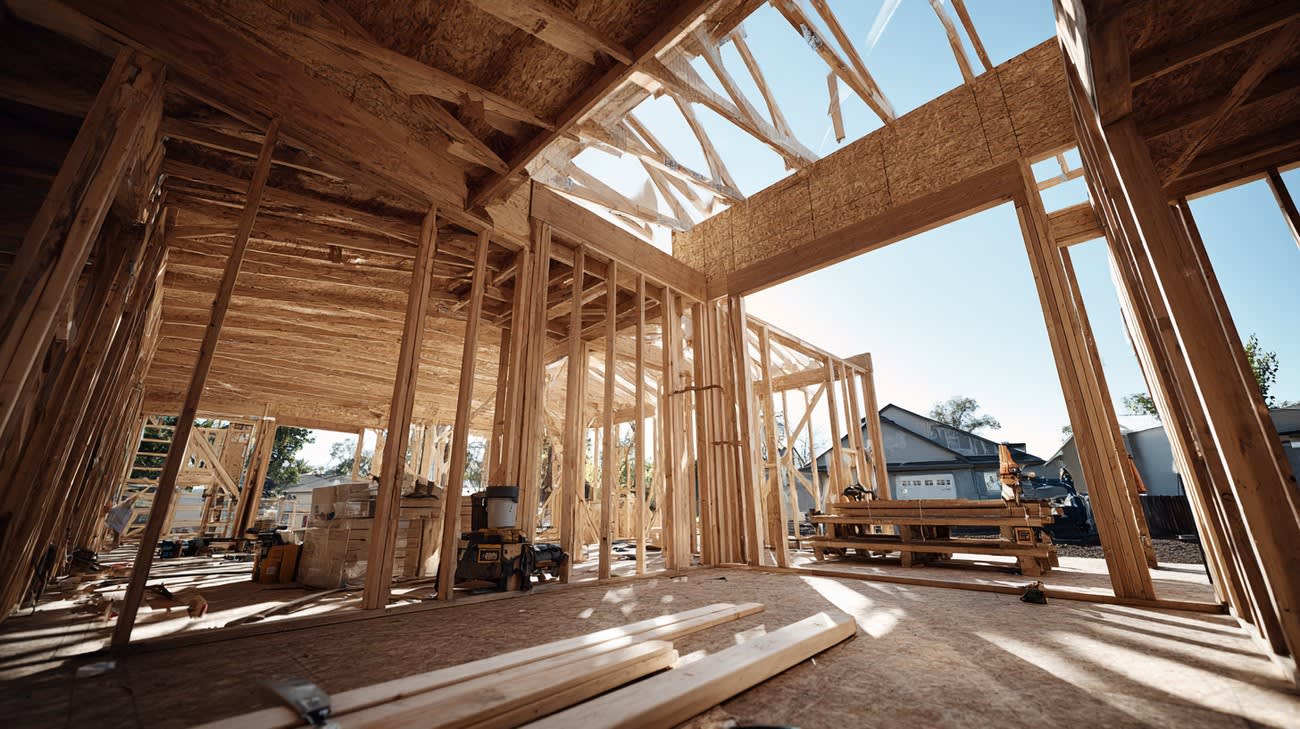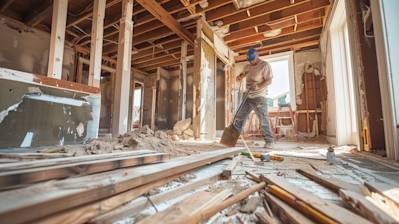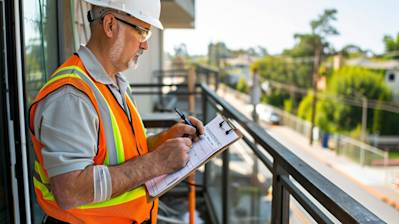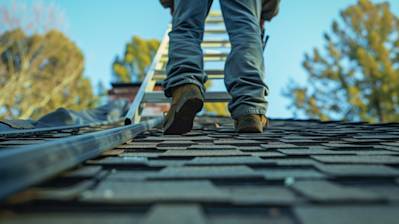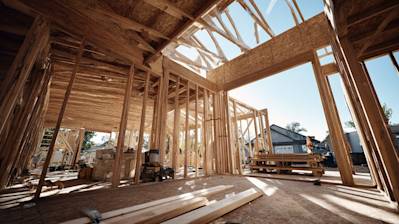Plywood sheathing is a crucial component in modern construction and woodworking projects. With its versatility, strength, and affordability, plywood sheathing plays a vital role in various applications, from residential and commercial buildings to DIY crafts. This comprehensive guide delves into the intricacies of plywood sheathing, exploring types, benefits, installation methods, and more.
Understanding Plywood Sheathing
Plywood sheathing is a type of building material used predominantly in construction to provide strength and support to walls, roofs, and floors. It consists of thin layers of wood veneer glued together, with each layer's grain perpendicular to the adjacent one. This cross-grain structure gives plywood its unique strength and durability.
Types of Plywood Sheathing
Plywood sheathing comes in various forms, each suited to specific applications:
- Softwood Plywood: Typically made from cedar, Douglas fir, or spruce, softwood plywood is highly durable and commonly used in structural applications.
- Hardwood Plywood: Known for its aesthetic appeal, hardwood plywood is often used in cabinet making and interior finishes.
- Marine Plywood: This is water-resistant, making it ideal for marine applications or environments exposed to moisture.
- Pressure-Treated Plywood: Treated for resistance against rot, insects, and decay, suitable for outdoor projects.
- Fire-Retardant Plywood: Treated to resist fire spread, used in specific commercial applications where fire safety is critical.
Key Advantages of Plywood Sheathing
Plywood sheathing offers numerous benefits, setting it apart from other sheathing materials:
High Strength and Flexibility
The cross-layered construction of plywood sheathing provides high tensile strength and flexibility. It can withstand heavy loads and impacts, making it ideal for structural applications in both vertical and horizontal installations.
Cost-Effective Solution
Compared to other building materials like steel or aluminum sheathing, plywood offers an economical solution without compromising quality. Its affordability makes it popular among contractors and DIY enthusiasts alike.
Environmental Friendliness
Plywood is a renewable resource, with many manufacturers adopting sustainable practices in its production. The use of wood from certified forests ensures minimal environmental impact.
Easy to Work With
Plywood is easy to cut, shape, and install. Its lightweight nature simplifies transportation and handling on construction sites.
Superior Insulation Properties
Plywood provides excellent insulation against heat and sound. It helps maintain indoor temperatures and reduces noise transmission, contributing to energy efficiency and occupant comfort.
Applications of Plywood Sheathing
Plywood sheathing serves a variety of functions in construction and beyond:
Residential and Commercial Construction
In construction, plywood sheathing is primarily used for:
- Wall Sheathing: Provides structural support and a base for siding or exterior finishes.
- Roof Sheathing: Acts as a base for roofing materials, distributing loads and resisting wind uplift.
- Flooring: Provides a strong, even base for various flooring types, including hardwood, laminate, and carpet.
Furniture and Cabinetry
Plywood is a popular choice for furniture makers due to its versatility and strength. It serves as a core material in cabinets, tables, and shelving units, offering a sturdy yet attractive finish.
Marine and Outdoor Applications
Marine-grade plywood is designed for environments with high moisture exposure, such as boat building, outdoor decks, and docks. Its water-resistant properties ensure durability and longevity in these demanding conditions.
Installation Best Practices
To maximize the benefits of plywood sheathing, proper installation is key:
Tools and Materials Needed
Before commencing installation, gather the following tools and materials:
- Circular saw or handsaw
- Tape measure and pencil
- Chalk line
- Hammer or pneumatic nailer
- Galvanized or stainless-steel nails
- Construction adhesive (optional)
Step-by-Step Installation
- Prepare the Surface: Ensure the surface where the plywood will be installed is clean, dry, and free of debris.
- Measure and Cut: Measure the plywood sheets to fit the specific area, marking it with a pencil and cutting with a saw.
- Position the Sheets: Lay down the plywood sheathing, spacing evenly with gaps to allow for expansion and contraction due to temperature variations.
- Secure the Sheathing: Using galvanized or stainless-steel nails, secure the plywood to the framing at regular intervals, ensuring each sheet is flush and evenly fastened.
- Check Alignment: Use a chalk line to ensure the sheets are aligned properly, making adjustments as necessary for a precise fit.
- Seal Joints: For added moisture resistance, apply construction adhesive along the seams and edges.
Maintenance Tips
Maintaining plywood sheathing enhances durability and performance:
- Regular Inspections: Check for signs of damage or moisture infiltration, particularly in exposed areas.
- Sealing and Finishing: Apply a sealant or finish to protect against environmental elements, prolonging the life of the plywood.
- Prompt Repairs: Address any damage, such as cracks or separations, immediately to prevent further deterioration.
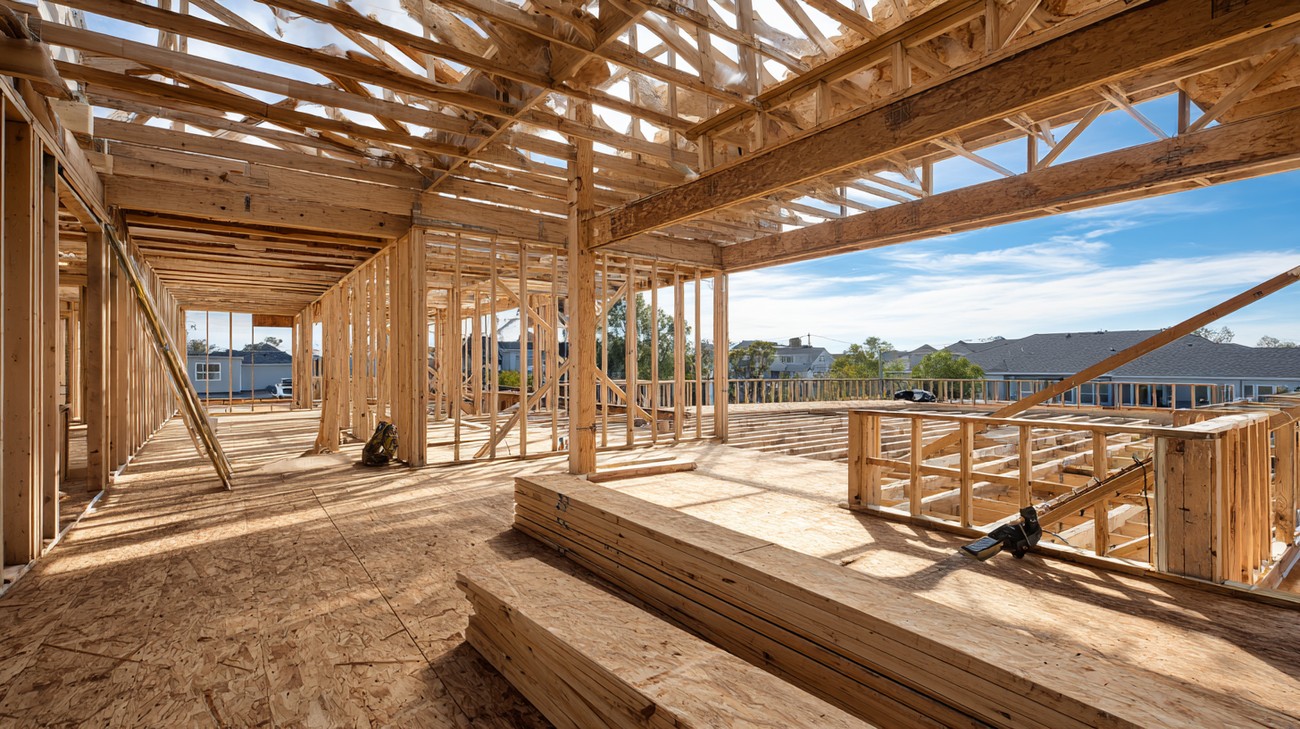
Frequently Asked Questions about Plywood Sheathing
How is plywood sheathing different from OSB (Oriented Strand Board)?
While both plywood sheathing and OSB are popular sheathing materials, they have some distinct differences. Plywood is made from thin layers of wood veneer, glued together with the grains at right angles, leading to a strong, water-resistant panel. OSB, on the other hand, is created by pressing layers of wood strands together in specific orientations. While OSB tends to be more cost-effective, plywood is more resistant to moisture and tends to perform better in areas prone to damp conditions.
What thickness of plywood sheathing is recommended for roofs?
The recommended thickness of plywood sheathing for roofs typically ranges from 5/8 inch to 3/4 inch, depending on the specific building codes and the nature of the project. Thicker panels often provide better structural support and insulation. It’s essential to consult local building codes and regulations to determine the appropriate thickness for your project, as these can vary based on location and expected load conditions.
Can plywood sheathing be used for exterior applications?
Yes, plywood sheathing can be used for exterior applications. It’s commonly utilized as a base material for siding and roofing, thanks to its robustness and durability. When intended for exterior use, it's crucial to select a plywood grade specifically rated for exposure to the elements. These grades are treated for moisture resistance, which helps prevent issues like swelling or warping over time. Additional protective coatings or finishes can also be applied for enhanced longevity.
How do I install plywood sheathing properly?
Installing plywood sheathing involves several key steps to ensure effectiveness and longevity. First, prepare the framework by checking for any obstructions or uneven surfaces. Place plywood panels with the grain perpendicular to the support beams to maximize strength. Secure each panel using appropriate fasteners, such as nails or screws, placing them about every 6 inches along the edges and every 12 inches within the field. Always leave a small gap between panels to allow for expansion and contraction due to temperature changes.
What grades of plywood sheathing are available?
Plywood sheathing is available in different grades, primarily categorized by the quality of the face and back veneers. Grades range from A to D, with A-grade having the highest quality veneer, minimal blemishes, and an attractive finish. For structural applications like sheathing, CDX plywood is frequently used, where C represents the front veneer, D the back veneer, and X indicates exposure capability to moisture. The choice of grade depends on the specific requirements of the project and the intended use of the plywood.
Is there a difference between structural and non-structural plywood sheathing?
Yes, there is a significant difference between structural and non-structural plywood sheathing. Structural plywood is designed to bear loads and provide rigidity to structures. It adheres to strict manufacturing standards, ensuring consistent quality and performance under stress. Non-structural plywood, however, is meant for use in applications where load-bearing is not a critical concern, such as interior decoration. It's important to select the correct type for your specific needs to ensure the safety and integrity of the structure.
How does plywood sheathing contribute to a building's energy efficiency?
Plywood sheathing can play a vital role in enhancing a building’s energy efficiency. When installed properly, it acts as a barrier against wind and moisture, which helps maintain indoor temperatures and reduces energy consumption for heating and cooling systems. Furthermore, engineered plywood with additional insulation layers can significantly improve a building’s thermal performance, contributing to lower energy bills and a more sustainable living environment.
What maintenance does plywood sheathing require?
Plywood sheathing requires minimal maintenance once properly installed, but routine checks can prolong its life. Inspect periodically for any signs of moisture infiltration or damage, such as warping or rot. If any issues arise, address them quickly to prevent further structural compromise. In areas prone to heavy rainfall or snow, additional sealing or protective coatings can be applied to enhance its resistance to environmental stress and ensure prolonged durability.
Can plywood sheathing be recycled or repurposed?
Yes, plywood sheathing can be recycled or repurposed, though the specific method will depend on its condition and local recycling facilities. If in good shape, leftover or used plywood can be cut and reused for other projects such as shelving, furniture making, or DIY home improvements. For plywood that is no longer structurally sound, many recycling centers accept wood to be processed into mulch or energy production materials, promoting sustainability and reducing waste.

The Upsides and Downsides of Plywood Sheathing
When it comes time to select the materials for your construction project, plywood sheathing can seem like a staple choice. It's a versatile material that has been used widely for decades in a variety of projects, ranging from small home improvements to large-scale construction endeavors. But is it the right choice for your specific needs? Let's break it down, the good and the bad.
Pros
Durability and Strength
Plywood sheathing is known for its toughness. It combines the natural strength of wood with the engineered benefits of a layered structure. Each layer of veneer is oriented at right angles to the adjacent one, enhancing its structural integrity and creating a material that can withstand considerable stress. If you're looking for a sheathing option that won't easily crack under pressure, plywood should be on your radar.
Versatility in Application
Whether you're putting together walls, roofs, or flooring, plywood sheathing can do it all. Its adaptability in handling various construction needs is a boon for both DIY enthusiasts and professional builders. It can be used in residential construction, commercial applications, and even in some industrial settings.
Availability and Sizing Options
Plywood is widely available in numerous sizes and thicknesses. This availability means you're likely to find exactly what you need without facing material shortages or needing special orders. Most home improvement stores carry an extensive selection, allowing you to select panels that fit the specific demands of your project.
Cost-Effective
Given its durability and versatility, plywood sheathing is often reasonably priced, offering good value for money. It can serve as a cost-effective solution for those who need reliable and sturdy material without breaking the bank. The competitive pricing and potential for long-term savings on repairs and replacements make it a compelling choice.
Eco-Friendly Choices
Many plywood products are available in eco-friendly options, utilizing sustainable materials and production methods. Some versions are even made from rapidly renewable resources, such as bamboo, and can be manufactured using formaldehyde-free glues, reducing the environmental impact.
Cons
Susceptibility to Water Damage
Perhaps one of the most significant drawbacks of plywood sheathing is its vulnerability to moisture. Prolonged exposure to water can lead to warping, swelling, and a weakening of its structural integrity. While there are treated options available, these often come at a higher cost and may still fall short in particularly harsh environments.
Weight Considerations
Plywood can be relatively heavy, especially when compared to other materials like OSB (Oriented Strand Board). This weight can make handling and installation more challenging—especially in projects where you're working above ground level. It might require extra manpower or equipment to safely manage its application.
Potential for Delamination
Over time, delamination can occur, especially in poorly manufactured sheets or when the plywood has been inadequately protected from the elements. This condition leads to the layers of the plywood peeling apart, ultimately compromising its strength. It's crucial to purchase high-quality plywood and ensure proper installation to mitigate this risk.
Cost Fluctuations
While plywood is often cost-effective, its price can be subject to fluctuations based on market conditions and availability of resources. This variability can make budgeting for large-scale projects more challenging, requiring careful monitoring of market trends to secure the best prices.
Chemical Sensitivity
Though there are eco-friendly options available, some plywood products may contain adhesives that emit volatile organic compounds (VOCs). This can be a concern for those with chemical sensitivities or those who prioritize indoor air quality. Opting for formaldehyde-free and low-VOC options can mitigate this issue, albeit at a potential price premium.
In the end, choosing plywood sheathing comes down to considering these pros and cons about its compatibility with your specific project requirements. How do these factors weigh in your particular situation? Understanding them can help you make a more informed decision and ultimately select the most appropriate material for your needs.

The content provided here is intended for informational purposes only and should not be considered professional advice. We recommend consulting with a qualified specialist before making any decisions related to your project. Pricing, product availability, and specifications are subject to change without notice. Any references to specific brands or products represent our opinions and do not constitute official endorsements or guarantees of performance.
